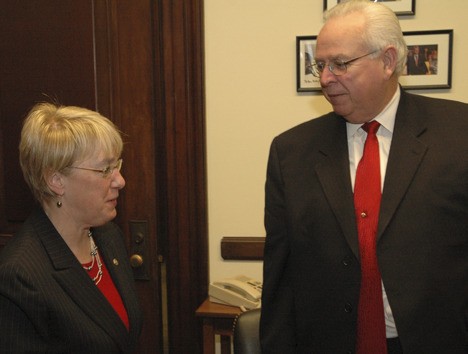As always, Mayor Pete Lewis had his wish list to take this week to Washington D.C. and the U.S. Conference of Mayors, the official nonpartisan organization of cities with populations of 30,000 or more.
Each of the 1,203 such cities in the country is represented by the mayor, its chief elected official at the conference. But being a relatively small city, Auburn finds it tough to be heard when the big boys like New York, Chicago and Philadelphia are using up all the oxygen.
“If the room is out to the front door, I’ll be about there, I’m sure,” Lewis said. “But I’ll have the ability to say something to somebody at some point, and that’s kind of neat.
Added Lewis, “… You know how I look at myself? I’m the little guy, the bottom feeder, I get the little scraps. But there’s something to be said for being at the table.”
One of USCM’s primary tasks is to lobby Congress on matters of common concern, including appropriations.
The mayor said his list this year includes:
• Approximately $10 million for the M Street project, which calls for construction of a grade-separated railroad crossing of M Street Southeast at the Burlington Northern Santa Fe Stampede Pass tracks
• The final round of money for the A Street to B Street corridor. Work is scheduled to begin this spring on Phase 1, which takes the project 3rd Street Northwest to 14th Street Northwest.
• Money for the ValleyCom cities to string fiber optic cable from Tukwila to Fife.
A last-minute funding change has the mayors meeting with President Barack Obama to discuss creating some sort of mechanism to get stimulus money directly to cities and to “shovel-ready” projects.
“If the feds are going to do any additional rounds of stimulus money at this point, they need to send it directly to the cities and the projects that are ready to go, instead of having it absorbed along the way by the state government,” Lewis said.
“I understood why they sent it to the states.
“For example, the only mechanism for transportation dollars in place right now is through the state. They literally didn’t know how to do it, because nobody had ever done that before,” Lewis said. “So they chose the mechanism that was in place, but now they are probably going to ask us to design the mechanism. So, that’s what we are going to spend a couple days doing if we get the opportunity.
“… I was watching the National Geographic Discovery Channel, and they talked about the river that flows out into the desert and goes into a trickle and then disappears,” Lewis said. “We’re at the end of the trickle. When it disappears, that’s where we are at.”



